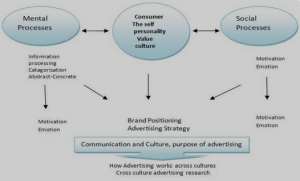Cultural differences play a significant role in shaping the effectiveness and reception of advertising campaigns. Let’s explore the human side of how cultural differences affecting advertising.

Cultural Differences Affecting Advertising
-
Table of Contents
ToggleCultural Symbols and Imagery:
- Envision an advertising campaign that uses symbols, images, or colors that are culturally sensitive and resonate with the target audience. Picture the positive response when consumers see elements that reflect their cultural identity, values, and aesthetics.
-
Language and Communication Styles:
- Imagine an advertisement that tailors its language and communication style to match the cultural norms of a specific audience. Picture how using colloquial expressions, humor, or storytelling formats that align with cultural preferences enhances the relatability of the message.
-
Social Norms and Taboos:
- Visualize an advertising campaign that navigates social norms and taboos with cultural sensitivity. Envision scenarios where brands understand and respect cultural boundaries, avoiding content that might be offensive or inappropriate in a particular cultural context.
-
Celebrating Cultural Diversity:
- Envision advertising that celebrates cultural diversity and inclusivity. Picture campaigns that showcase a range of cultural backgrounds, ethnicities, and lifestyles, fostering a sense of representation and connection among a diverse audience.
-
Cultural Holidays and Festivals:
- Imagine an advertising strategy that aligns with cultural holidays and festivals. Picture campaigns that capture the spirit of celebrations, incorporating festive themes, traditions, and rituals that resonate with the cultural significance of specific occasions.
-
Family and Community Values:
- Visualize advertisements that tap into the importance of family and community in different cultures. Envision scenarios where brands emphasize collective well-being, unity, and shared experiences, aligning with cultural values that prioritize relationships.
-
Cultural Sensitivity in Humor:
- Envision an advertisement that uses humor in a culturally sensitive manner. Picture scenarios where brands avoid humor that may be misunderstood or offensive in a particular cultural context, ensuring that comedic elements resonate positively with the audience.
-
Localization of Content:
- Imagine advertising content that is localized to suit the preferences and needs of specific cultural markets. Picture brands adapting not only language but also visuals, references, and product positioning to align with the unique characteristics of diverse cultures.
-
Cultural Influencers and Endorsements:
- Visualize campaigns that leverage local influencers or celebrities who hold cultural significance. Envision the impact of endorsements from individuals who are respected and admired within a specific cultural context, adding authenticity to the brand message.
-
Understanding Cultural Values:
- Envision an advertising strategy that goes beyond surface-level understanding to deeply grasp the cultural values of the target audience. Picture campaigns that reflect empathy, understanding, and a genuine appreciation for the cultural nuances that shape consumer behavior.
In this humanized exploration, cultural differences become a lens through which advertising campaigns connect with individuals, respecting their cultural identities and creating meaningful engagements that go beyond a one-size-fits-all approach.
